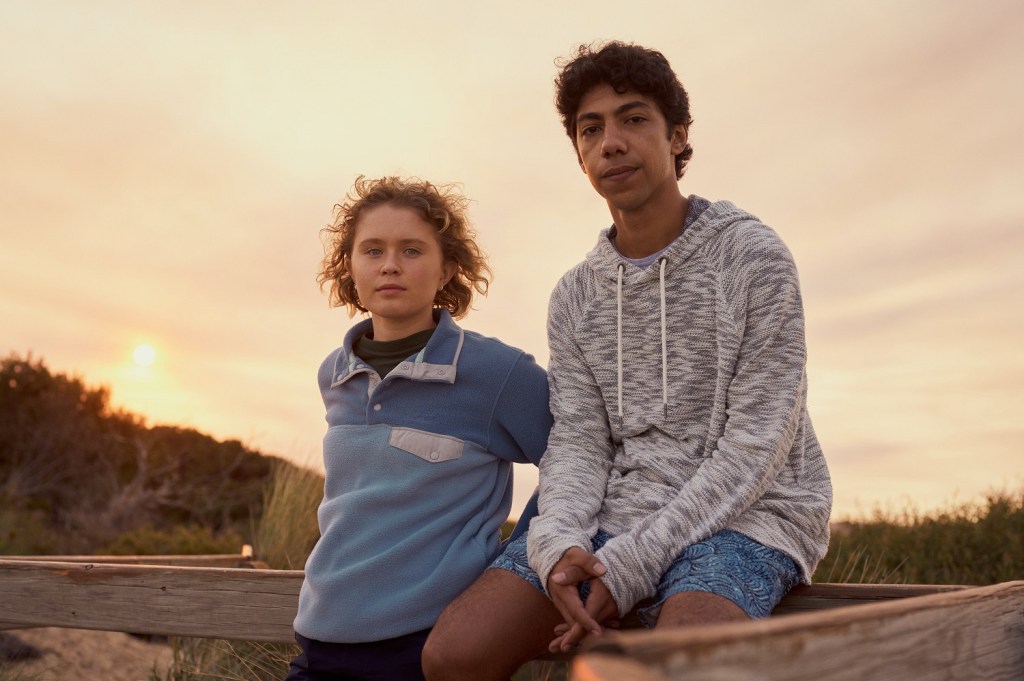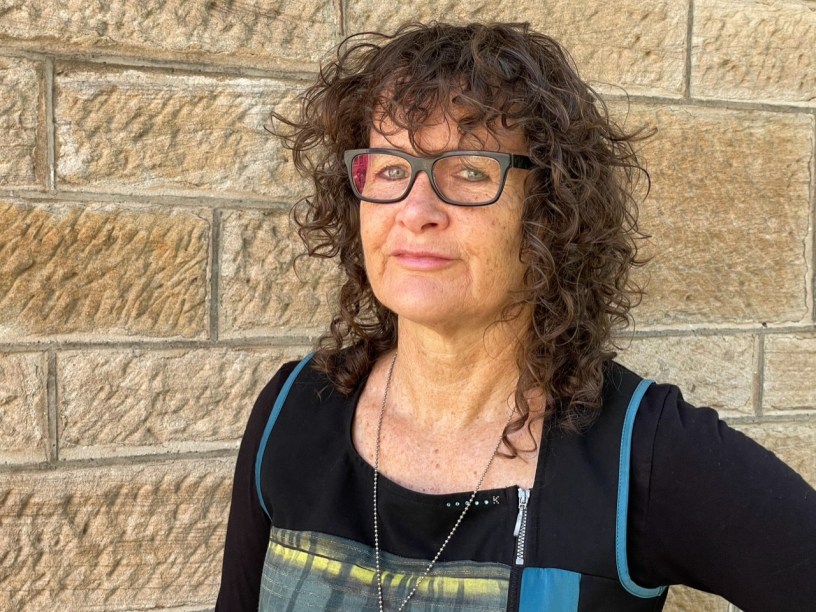Australian film and television is delivering less local cultural value to audiences, authentic dramas are fewer, and much of it now feels a lot less Australian – even unrecognisable as made in this country, according to veteran screen journalist Sandy George.
George argues if there is nothing recognisably Australian on the screen, it carries little cultural value. It is ‘Australianness’ that excites local viewers, and cultural value is the main reason why taxpayer funding underpins drama production.
The following is an extract from George’s New Platform Paper ‘Nobody talks about Australianness on our Screens‘, just published by Currency House, in which she argues Screen Australia must proactively cultivate film and television that is Australian in look and feel.
Screen Australia must make exceptional local cultural value the focus of everything.
Screen Australia needs to shout “What do we want? Cultural value! When do we want it? NOW!”
Senior executives say that local cultural value is a plank in their decision making and it is. But it is no longer enough for them to quietly consider the cultural value of individual projects or a group of projects in the same application round. The world has changed. It is time that they very seriously reviewed all programs and initiatives through the lens of cultural value, bearing in mind that ‘Australianness’ is the key to it.
The agency needs to put aside the notion that if an Australian production company is making content, then the content is Australian and automatically has cultural value. Just another cop show shouldn’t cut it. Screen Australia’s direct taxpayer funding must go to projects with exceptional potential local cultural value — and, yes, what that means exactly will have to be thrashed out, and it isn’t straightforward.
Creative freedom is implicit in the other kind of financial assistance available, the Producer Offset, and it is available to all eligible projects. A truck can be driven through the SAC [significant Australian content] test; no-one is exercising granular discretion. There is no cap on what individual projects can claim, and there is no cap on total annual claims. Plus the PO was recently held at 40 per cent for features and increased to 30 per cent for television (although there are fears that the networks will reduce their content contribution). The PO keeps pace with rising costs and rising production levels whereas the taxpayer funding through Screen Australian doesn’t. It’s time to be very clear that Screen Australia is there for culture.
Dare I say it, but I feel a bit sorry for Screen Australia at times because it is too relied upon, entitlement in the industry is rife, and it is often in a no-win situation because the supply of funding doesn’t meet demand for it. Some of its problems are of its own making, however. It has its fingers in too many pies. It needs to stop thinking it can and should control everything and decide what it can do best in service of the Australian public. Traditionally, there has been the notion that each FTA platform deserves some of Screen Australia’s money. Stop that. There should be just the one determinant.
There are many matters to carefully consider, of course. For example, what attitude to adopt towards talent escalation; that is, what funding to provide for projects made by inexperienced filmmakers perceived as having talent. It would be a good audience-facing discipline for them to know that the only possibility of getting money is if their projects have the kind of Australianness that delivers exceptional cultural value. And history tells us that those kinds of projects flush out support for people who become Baz Luhrmanns and George Millers (Mad Max)—and more of them is good because more benefits flow from them making mega-budget productions in Australia than flows from non-Australians making them. Another approach is for the individual states to take more responsibility for new talent, given they are closer to the ground. States too have considerable resources. More understanding of how the federal-state relationships work would not go astray.
When Screen Australia overlooks Australianness it should make clear why in its communications – it always announces what projects are getting its funding. In recent years, Screen Australia executives drank the Kool-Aid of their old political bosses. The media release about the appearance of the 2020/21 drama report (which its research department does an exemplary job of publishing each year) demonstrates this. It trumpeted: ‘Aussie drama production reaches record-breaking $1.9 billion expenditure’. It’s misleading because it’s not Aussie drama production. It is Aussie drama produced in Australia plus foreign drama filmed in Australia. Economic value and cultural value, foreign and Australian, should be treated separately in such reports, and total expenditure certainly shouldn’t be talked about breathlessly for all the reasons this paper raises. Stop pretending everything is OK. Depending on economics to deliver cultural value is arse about.
Screen Australia is a highly influential body. Where it puts its development support is a thumbs-up signal that others heed: partners on the other side of the world, overseas broadcasters, state government agencies, and private investors. It never wholly funds major projects, but very often its decisions determine which dramas gets the green light. In 2020/21 it invested in about 40 per cent of all the Australian features that went into production, in just over 70 per cent of mini-series for the FTAs, in just under 70 per cent of dramas for the SVODs and in 30 per cent of all FTA series and serials. (Under Screen Australia’s rules it can’t continually back new seasons of existing series.)
Screen Australia often says it can only fund what comes across its desk. True. But just as it guides the media’s thinking, it also guides practitioners’ thinking. Filmmakers constantly try to second guess its priorities. A few well-chosen words about exceptional local cultural value being a priority would have a big impact on what the industry chooses to develop.
Public Film Funding at a Crossroads lists the values that public film agencies in Europe aim to safeguard: cultural/artistic idiosyncrasies with specific territorial references; film as an cultural/artistic form; diversity in all its senses; European ownership; independent production companies that own underlying IP rights, and have artistic freedom and creative control along with the filmmakers; IP rights handled territory by territory; and cinemas as a central place for shared experiences.
Australia take note: they lean more to the cultural than the economic – and they value the cinema experience. Everyone needs to work together to fortify the big screen experience for those times when an Australian film can justify the high cost and high risk of a cinema release.

Drama should tackle topics of national importance
“Tony Ayres came to us, just after the fires happened, and said ‘We need to talk about this. The community needs a cathartic moment.’ And we said ‘yes’ straight away.”
This is ABC TV’s Sally Riley explaining how the 2019/20 Black Summer bushfires gave rise to the six-part drama Fires. Ayres and Belinda Chayko created the show, which is available free on the streaming platform ABC iview.
The anthology series is cleverly conceived: the two young volunteer firefighters (Eliza Scanlen and Hunter Page-Lochard) at the core of the first episode, are linking characters across all episodes, each of which focusses on different people. In the second episode, only the most cold-hearted viewer would not feel grief and anger at the fate of dairy farmers Kath and Duncan (Miranda Otto and Richard Roxburgh). In the third, Mark Winter’s portrayal of a methadone addict reverses every prejudice a viewing public might have about drug addiction.
I had to see Fires for work and otherwise would not have done so because in horror and shock I had watched the Australian countryside burn over and over on the nightly news in 2019. Others felt the same way. Sure enough, it reawakened my feelings of despair. But the experience also left behind the sensation that I’d sat holding hands with the people who lived through the trauma, listening intently to them while they told their confronting stories.
Screen Australia can do almost anything under its enabling legislation, which suggests, among other things, making programs ‘that deal with matters of national interest or importance to Australians’. Shake things up! Ask filmmakers aged 14 to 35 years to pitch projects. The agency’s new head of content Grainne Brunsdon says the aim is to cater for this audience. Shake it up further by saying the pitches have to be comedy! Even further by asking in the public! Revel in what’s possible.
There is so much else that needs to be talked about
I worked at Screen Australia for three years part-time up to mid-2018 and felt crushed when the realisation hit that there was rarely talk of brilliant projects coming in the door. When I recently asked Screen Australia’s chief executive Graeme Mason publicly if enough good projects came in, he said ‘no’.
This raises so many questions.
Cultural value flows from shows that are great, so what can be done about getting better applications? What’s discouraging the truly talented? Do they not have the contacts to gain entry to the citadel? Should there be more digging for new talent, including in the tertiary environment? Are filmmakers born or bred? Why do the same production companies get repeat funding?
There are so many more matters that could be explored: the remarkable popularity of local films at festivals and what lessons can be learned there; the craving for Indigenous films among non-indigenous audiences, built from nothing over decades; how diversity and inclusion and addressing gender imbalance has done wonders for Australianness and there’s so much more of that to do. Maybe time limits should be imposed on Screen Australia jobs so different views of Australia cycle through the building and different networks gain access.
Sandy George’s full New Platform Paper ‘Nobody talks about Australianness on our Screens‘ is available now free on www.currencyhouse.org.au. Following industry feedback, an updated hard copy will published by Currency House in December



